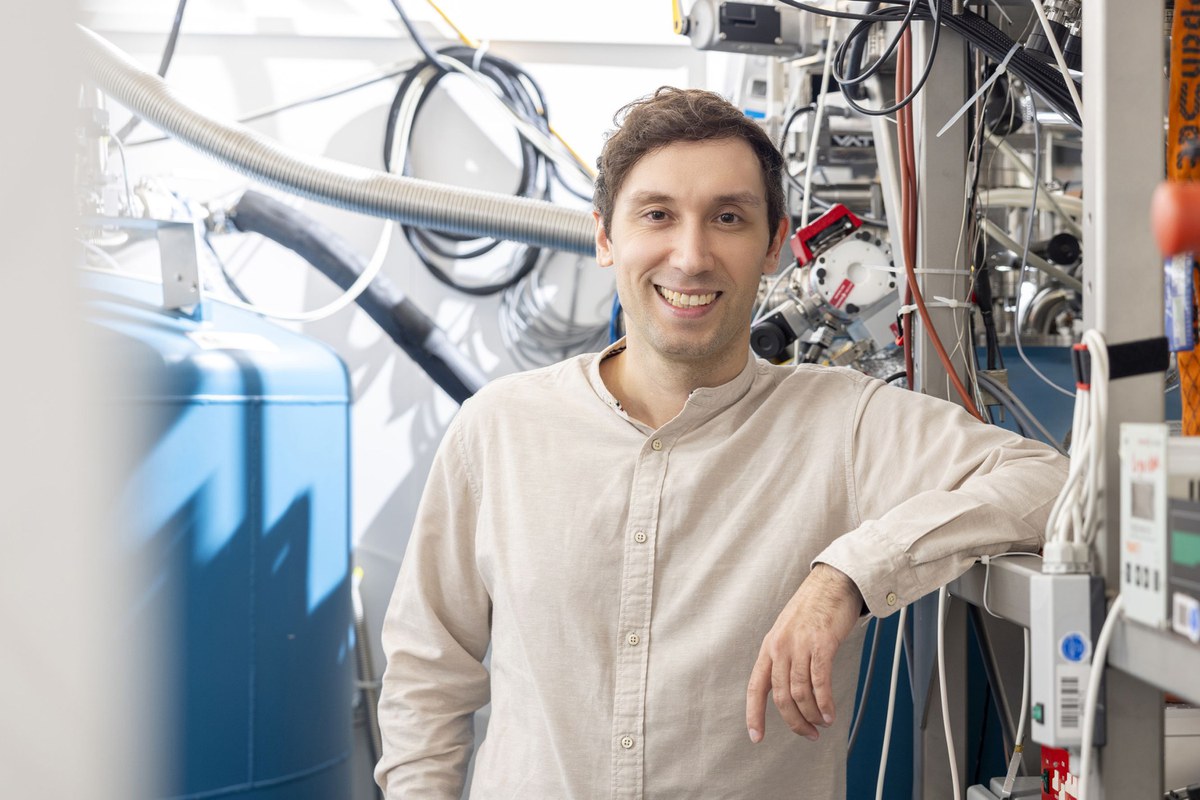25 July 2024
Researchers at Forschungszentrum Jülich and the IBS Center for Quantum Nanoscience (QNS) in South Korea have developed a new quantum sensor. In doing so, they have fulfilled a long-held dream of the scientific community in the process: to create an MRI-like tool for quantum materials. Dr. Taner Esat from Jülich's Peter Grünberg Institute (PGI-3) explains what it is all about.

Dr. Taner Esat, what exactly is a quantum sensor and what can it be used for?
The areas of application for quantum sensors are diverse: magnetometry, time and frequency measurements, and gravity measurements are just a few examples. Quantum sensor technology offers enormous potential for scientific and technological progress, as it continues to push the boundaries of sensitivity.
Quantum sensors use quantum mechanical effects for precise measurements of physical quantities. Such sensors often outperform conventional sensors in terms of accuracy and sensitivity. An example of this is the spin of an electron, which behaves like a small magnet in a magnetic field. The spin can only have two orientations, namely along or against the magnetic field. These are referred to as spin-up and spin-down states. In order to reverse the orientation of a spin, energy must be added, since the orientation along the magnetic field is energetically preferred. In contrast, the opposite orientation is prevented by an energy barrier. This leads to different, clearly distinguishable energy states of the spin in the magnetic field - a phenomenon known as the Zeeman effect. The energy difference depends on the strength of the magnetic field. This means that it can be used for precise measurements. This is exactly what we are doing in our quantum sensor. We read the energy difference between the two spin states using the electron spin resonance technique and are then able to reconstruct the magnetic field of a single atom.
To what extent can we speak of a breakthrough here?
Quantum sensors have developed rapidly in recent decades. One of the most advanced sensors is based on defects in the diamond lattice and is sensitive to magnetic fields, electric fields, and even differences in temperature. The sensitivity to magnetic fields has been increased enormously. This has gone as far as detecting individual electron and nuclear spins. A fascinating development.
However, the spatial resolution of this technique was limited by the size of the sensors, since the defects have to be several nanometres deep in the diamond crystal. For this reason, it was not possible to increase the spatial resolution to the atomic scale. With our new approach, we have succeeded in doing exactly that. We positioned a molecule in which an electron spin is trapped on the tip of a scanning tunnelling microscope and successfully used it as a sensor. Our method makes it possible to bring the sensor to individual atoms within a distance of just a few atoms and to conduct precise measurements of their electrical and magnetic properties - with a spatial resolution that is better than an angstrom, the typical diameter of an atom. This has been a long-held dream of many scientists.
You came up with the idea, but the measurements were performed in South Korea. How important are such international collaborations and how exactly does such a collaboration work?
We had the initial idea for the quantum sensor here in Jülich back in 2018, after the first experiments with individual, upright standing molecules. Even then, we suspected that these molecules had a long-lived spin that could be used as a sensor. At around the same time, Andreas Heinrich's research group combined electron spin resonance and scanning tunnelling microscopy to detect and manipulate individual spins on surfaces.
Fascinated by this, I went to South Korea to work with him as a postdoc and learn the methodology. I subsequently returned to Jülich to continue my work on standing molecules. In the meantime, we had completed our quantum microscope, which we used to detect the spin in these molecules. Having obtained these new insights, I travelled to South Korea for a research stay - the starting point for our collaboration. By combining our expertise in single-molecule manipulation and electron spin resonance, we were able to develop the first quantum sensor for the atomic world.
Today, many experiments require such combined expertise, as does the development of new methods. You have to think outside the box and be willing to learn and try new things. One way to do this is through collaboration. In our case, the collaboration was quite easy. I already knew the people, the instruments, and also the country and the culture from my time as a postdoc. That made things a lot easier. We were able to start the experiments immediately and even had the first results for the quantum sensor in the first week after my arrival. It couldn't have gone any better.
The new quantum sensor opens up fascinating possibilities - will it also be used at Forschungszentrum Jülich in future?
In the next few months, we will complete development of a millikelvin scanning tunnelling microscope funded by the German Federal Ministry of Education and Research (BMBF). This instrument will enable us to reach temperatures of 10 mK and to carry out electron spin resonance experiments. This makes it ideally suited to continue experiments with the new quantum sensors in Jülich. We also have many new ideas about how we can use and further develop the quantum sensor. For example, we want to use it to study new quantum materials, for quantum simulations with single atoms on surfaces, and, beyond that, as a mobile qubit.






